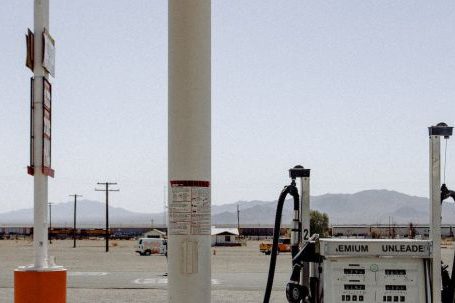Petroleum exploration has come a long way since the early days of drilling and guesswork. Today, technological advancements are revolutionizing the industry, enabling more efficient and accurate exploration of oil and gas reserves. In this article, we will explore some of the cutting-edge technologies that are driving petroleum exploration forward.
Seismic Imaging: Peering into the Earth’s Depths
Seismic imaging has long been a crucial tool in petroleum exploration, providing valuable insights into subsurface structures. However, recent advancements in this technology have taken it to new heights. High-resolution 3D seismic imaging allows geologists to peer deep into the Earth’s depths with unprecedented clarity. By using arrays of sensors and advanced algorithms, seismic imaging can now provide detailed images of geological formations, enabling better identification of potential oil and gas reservoirs.
Remote Sensing: Uncovering Hidden Reserves
Another exciting technology driving petroleum exploration is remote sensing. This technique involves the use of satellite imagery and airborne sensors to gather data about the Earth’s surface and subsurface. By analyzing this data, geologists can identify subtle changes in surface features that may indicate the presence of oil and gas deposits. Remote sensing has the potential to uncover hidden reserves in previously unexplored areas, expanding the scope of petroleum exploration worldwide.
Machine Learning: Analyzing Big Data
With the increasing availability of data from various sources, the challenge for petroleum exploration is no longer a lack of information but rather how to make sense of it all. This is where machine learning comes into play. Machine learning algorithms can analyze vast amounts of data, including seismic images, well logs, and production data, to identify patterns and make predictions. By leveraging this technology, geologists can quickly and accurately evaluate the potential of different exploration prospects, saving time and resources.
Drone Technology: Mapping and Monitoring
Drones are not only popular among hobbyists; they are also becoming an invaluable tool in petroleum exploration. Equipped with high-resolution cameras and sensors, drones can quickly and safely collect data in areas that are difficult or dangerous to access. They can be used to create detailed maps of exploration sites, monitor ongoing operations, and even detect leaks or other environmental hazards. By providing real-time data and reducing the need for manual inspections, drones are improving the safety and efficiency of petroleum exploration.
Virtual Reality: Immersive Training and Visualization
Virtual reality (VR) technology is not limited to entertainment; it is also finding applications in petroleum exploration. VR allows geologists to immerse themselves in virtual environments, providing a realistic representation of subsurface structures and exploration sites. This technology is particularly useful for training purposes, allowing geologists to practice well planning, seismic interpretation, and other critical tasks in a safe and controlled environment. Additionally, VR can enhance collaboration among geologists by enabling real-time visualization and interaction with data.
In conclusion, the rapid advancement of technology is revolutionizing the field of petroleum exploration. Seismic imaging, remote sensing, machine learning, drone technology, and virtual reality are just a few examples of the cutting-edge innovations driving the industry forward. These technologies are enabling more accurate and efficient exploration, uncovering hidden reserves, and improving safety and collaboration. As the industry continues to embrace these advancements, the future of petroleum exploration looks bright.





